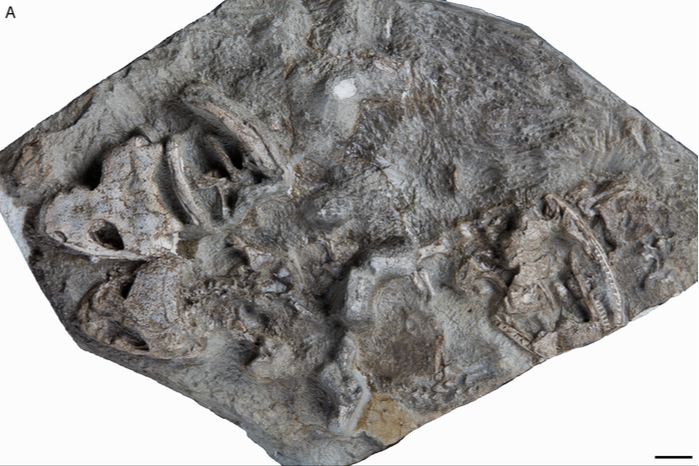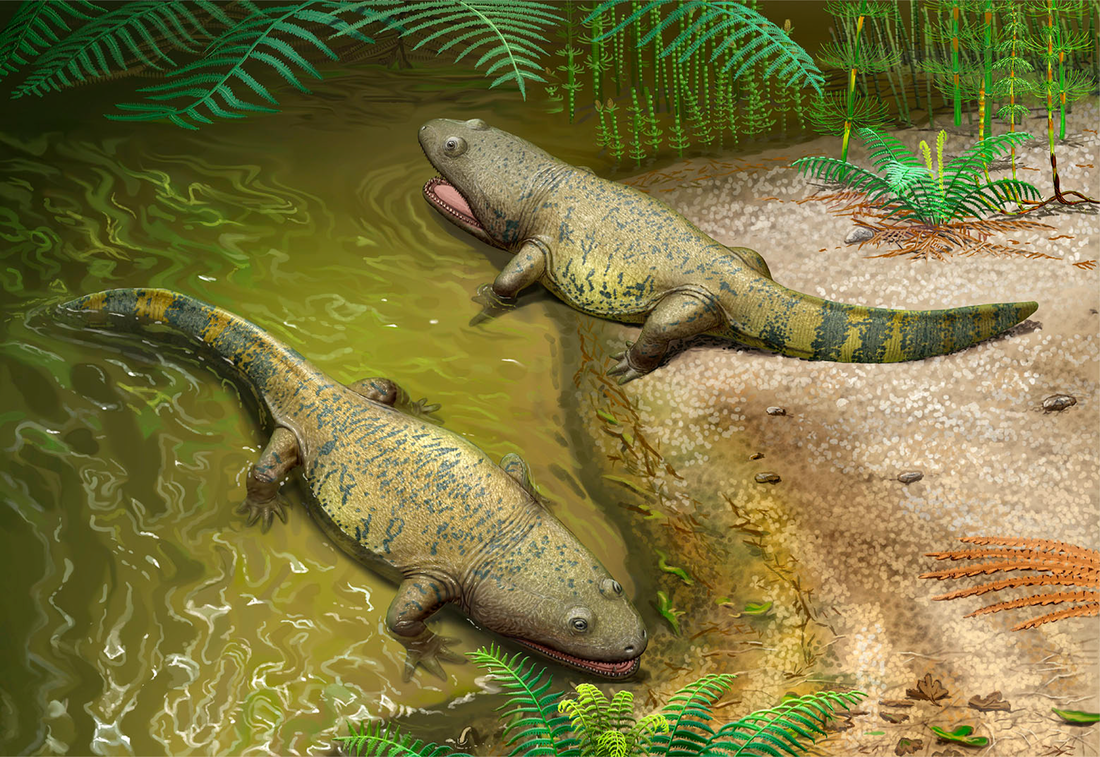|
Title: New publication (First record of the amphibamiform Micropholis stowi from the lower Fremouw Formation (Lower Triassic) of Antarctica Authors: B.M. Gee, C.A. Sidor Journal: Journal of Vertebrate Paleontology DOI: 10.1080/02724634.2021.1904251 General summary: Following the end-Permian mass extinction (252 mya), life on Earth hit a big reset button. Many major groups suffered substantial losses in biodiversity or went entirely extinct, being replaced by other groups that were rare or non-existent before the extinction. The temnospondyl amphibians are no exception - almost all of the characteristic groups found in the Permian are entirely wiped out, and that ones that survive it are found in very low diversity and are restricted to mostly a few localities that would have been at high latitude. Concurrent with this is the observation that a lot of the first temnospondyls that appear in the Early Triassic are rather small compared to their Permian predecessors or their later Triassic successors. One of these is a holdover from the Permian, the amphibamiform dissorophoids. There is only one definitive amphibamiform in the Triassic (there were over 30 in the Permian), Micropholis stowi, a species known from South Africa for over 150 years now. Our study reports the first record of M. stowi from outside of South Africa, in similarly aged Early Triassic rocks from Antarctica. This further solidifies the similarities between the Early Triassic of Antarctica and South Africa, but it still comes in the face of somewhat stark endemism otherwise - most of the temnospondyls known from the southern hemisphere at the time are found in only one spot, despite there being a rich record of this group in places like South Africa, Australia, India, and Madagascar. This is also the first paper from my postdoc and sets the stage for some of our in prep projects on other newly collected material from Antarctica!
Title: Description of the metoposaurid Anaschisma browni from the New Oxford Formation of Pennsylvania Authors: B.M. Gee, S.E. Jasinski Journal: Journal of Paleontology DOI: 10.1017/jpa.2021.30 The amazing art above was done by Sergey Krasovskiy; you can find his DeviantArt profile here and his Twitter here! The number of metoposaurids is not random - we know that there were at least two individuals preserved at the site based on the number of duplicate elements from the site. General summary: This study provides the first detailed description of metoposaurid temnospondyls from Late Triassic deposits in Pennsylvania. Metoposaurids are well-known for their widespread distribution in the Late Triassic, including in the southwestern U.S., but they have a much scarcer record west of Texas. The east coast in particular was geographically closer to other regions that preserve metoposaurids that have drifted apart over the millenia, like northern Africa and western Europe. The east coast is also the only region in North America where a large-bodied temnospondyl that isn't a metoposaurid is known from (this pattern of metoposaurid exclusivity is not observed anywhere else with decent sampling). While previous people have mentioned the Pennsylvania material and ID'd it, they never provided good figures or explicit justification for their ID, so essentially any reader was left to take them at their word. We formally describe the material, identifying it to Anaschisma browni (best known from Arizona, New Mexico, Texas, and Wyoming), which is not the same species that a metoposaurid from Nova Scotia belongs to, and discuss the importance of providing proper documentation and justification for taxonomic identifications (which are fluid hypotheses, not static facts). While the east coast is much more fossil-poor (this is definitely the best metoposaurid material from anywhere in North America west of Texas), it may also be the only region that preserves the transition from a diverse large-bodied temnospondyl assemblage to one that is entirely dominated by metoposaurids.
|
About the blogA blog on all things temnospondyl written by someone who spends too much time thinking about them. Covers all aspects of temnospondyl paleobiology and ongoing research (not just mine). Categories
All
Archives
January 2024
|


 RSS Feed
RSS Feed
